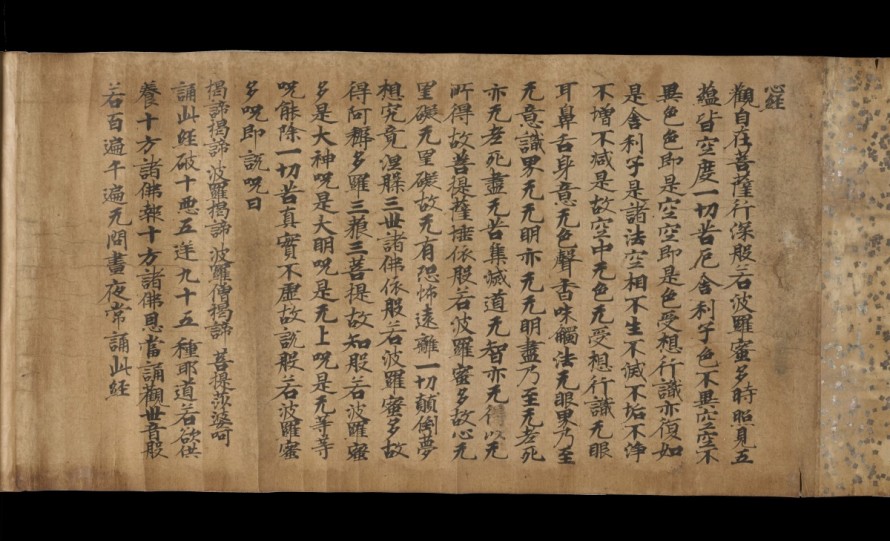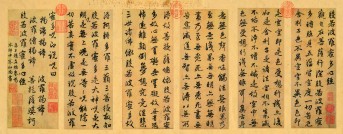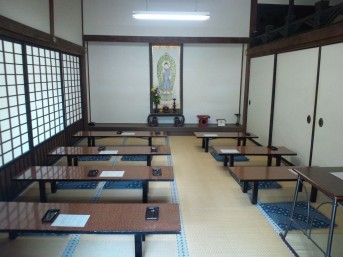Japan, Nara period, 710–794; handscroll, ink on paper; 9 x 16 11/16 in.; Princeton University Art Museum, Museum purchase, Fowler McCormick, Class of 1921, Fund, 2012-99, photo: Princeton University Art Museum/Art Resource, NY.
The Heart Sutra is one of the central scriptures of Mahayana Buddhism; “Sumidera” indicates the location of a temple in Kyoto where it was transcribed. In this text, Avalokiteshvara recounts the Buddha’s realization of the interconnectedness and boundlessness of all things. Japanese Buddhists often recite this sutra daily as a method of meditation and contemplation. The repetition of the sounds enables insight into the meaning of the scripture. Furthermore, practitioners often copy the text in order to imbibe an understanding of the teachings. This practice reflects the idea of calligraphy as an elevated art form, serving as the gateway to spiritual awakening. BO






